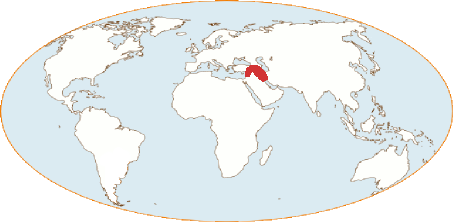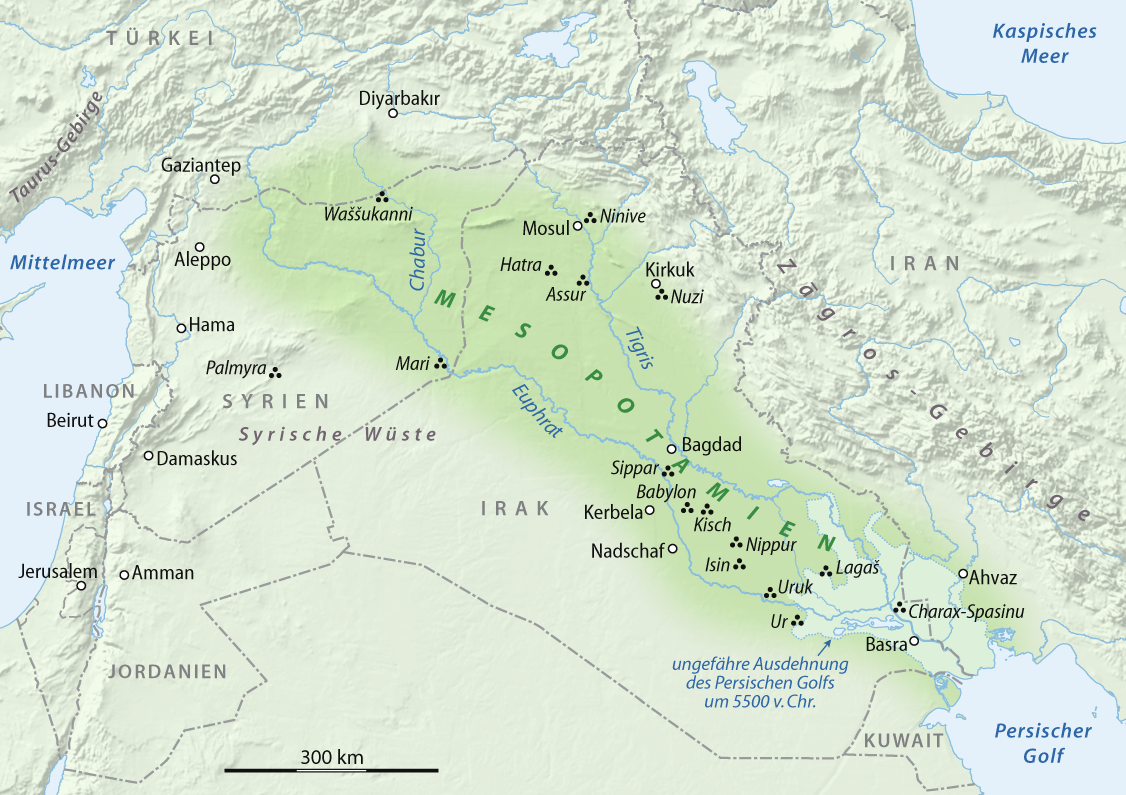Elam, Sumer and Akkad (4th to 3rd millennia BC) in Near-East.
From the 4thth millennium BC, testimonies attesting to the presence of beer are multiplying in a geographical area that stretches from the Zagros Mountains in the east (Iran) to the Euphrates in the west (Iraq/Syria), and from the foothills of Anatolia in the north (Syria/Turkey) to the Persian Gulf in the south. This area is also the craddle of the first writing system in the world.
This vast region is home to Elamite, Sumerian, Akkadian and North Syrian cultures. It is the Great Mesopotamia, i.e. the region between the two rivers Euphrates and Tigris (present-day Iraq), extended to the regions bordering it, notably the Susiana (the country of Elam) to the south-east and the mountainous range of the Zagros to the east. At this time, the waters of the Persian Gulf rise almost 200 km further north. The Sumerian cities of Ur and Uruk grew up on the shores of the Gulf. These powerful city-states were supported by a hinterland dedicated to cereal farming and sheep breeding. They are also maritime cities living from fishing and coastal trade in the Persian Gulf.
The evidences that attest to the birth and evolution of the brewery in this vast region are very diverse: stamps, economic and technical vocabulary, pictograms, documents written on clay tablets, technologies used (malt, bread-beer, gruel, leaven), kudurrus, analyses of biochemical residues, archaeological remains.
We review those that highlight the links between beer brewing and the emergence of Mesopotamian city states.
The technological aspects go beyond the limits of a historical overview. They will be presented in specific articles.




